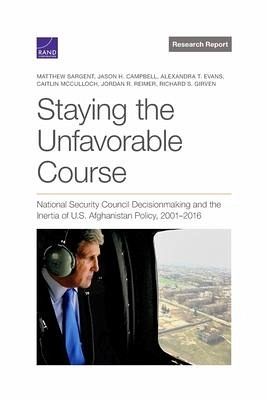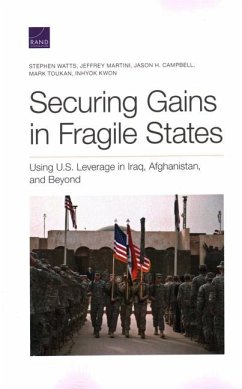
Staying the Unfavorable Course
National Security Council Decisionmaking and the Inertia of U.S. Afghanistan Policy, 2001-2016
Versandkostenfrei!
Versandfertig in über 4 Wochen
33,99 €
inkl. MwSt.

PAYBACK Punkte
17 °P sammeln!
The authors examined the reasons behind the inertia of the U.S. policy objective in Afghanistan through interviews with the senior leaders involved in policy deliberations between 2001 and 2016.












